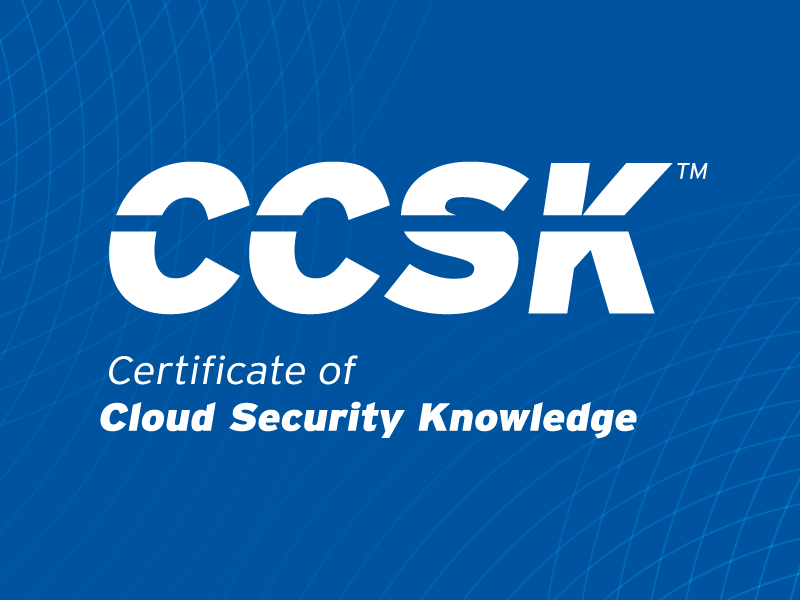What is Identity and Access Management [2025 Guide]
Published 07/08/2025
Originally published by Veza.
Written by Mariah Brooks, Identity Security Consultant and Matthew Romero, Technical Product Marketing Manager, Veza.
Identity and access management (IAM) is only becoming more important as the modern attack surface grows. With 80% of organizations having experienced an identity-related incident in the last year, it’s no longer a matter of “if” but “when” your organization will be targeted. And, when a data breach inevitably unfolds, there’s a 75% chance it will occur through the theft or misuse of identity.
Properly-configured IAM tools can help mitigate some identity security risks. But traditional solutions also have limitations that can create blindspots—like non-human identities (NHIs) and over-dependence on outdated, misrepresented group and role names.
How can organizations protect themselves from identity-related breaches if IAM solutions open doors for attackers?
This guide provides an overview of Identity and Access Management (IAM), including how it works, current IAM tools, the limitations of current IAM technology, and solutions that offer better visibility into access. With this information, you can decide how to best approach IAM within your organization and whether you need to implement more intelligent solutions to complement your identity security posture and access management strategies.
What Does Identity and Access Management Mean?
Identity and access management helps organizations control who can access their digital infrastructure. The goal is preventing unauthorized access to enterprise resources, systems, devices, data, applications, and more.
It incorporates both authentication (verifying who someone is) and authorization (determining what they are allowed to do) to help companies understand and visualize what actions each identity can take within the organization’s applications and systems.
Put more simply, IAM is designed to ensure that only the right people have the right access to the right resources at the right time.
Identity Management vs Access Management
Although often conflated, identity management and access management are actually two separate functions of controlling and securing access to systems and data, and they focus on slightly different things.
Identity management is about verifying and managing user details. It involves creating and maintaining user profiles with information like names, job roles, and contact information.
When a new employee joins a company, for example, identity management drives the process of setting up a new account for them in the company’s systems. It also includes managing these details throughout the employee’s lifecycle, from the time they’re hired to any role changes and promotions and until they leave.
Access management is about controlling what resources a user can access and what they can do with them. It involves monitoring permissions when users attempt to log into a system or access and interact with specific files or applications. Based on the organization’s policies and the user’s permission, access is either allowed, denied, or restricted.
For example, a regular employee might be able to view documents but not alter them, whereas an administrator might have permission to both view and edit those documents. The goal of access management is to follow the principle of least privilege, or making sure that users can only access the resources they need to perform their jobs and nothing more.
How Does IAM Work?
Identity and access management works by coordinating several core processes to control how users interact with digital resources. It typically involves several functions that can differ depending on an organization’s industry and size. However, most IAM workflows follow a similar series of steps.
It starts when a new user joins and is assigned an identity. This identity, which includes details about the role and the specific access rights associated with it, essentially determines what users can do once they log in.
Whenever a user does attempt to access a system, the first step is to authenticate their identity. That means checking credentials like passwords, security tokens, biometrics, or other forms of identification to confirm the user is who they claim to be.
Next comes authorization, which means determining what the user is allowed to do based on their role, group, or assigned policies set by the organization’s security policies. By verifying a user’s role and privileges against the requested action or resource, IAM helps make sure users can only access the systems, applications, or data that match their responsibilities.
But IAM doesn’t stop at login. It demands continuous management for all permissions throughout each user’s lifecycle. As people join, change roles, or leave, for instance, IAM enforces provisioning (setting up access for new users) and deprovisioning (removing access when no longer needed) behind the scenes.
However, how IAM works at your organization will also depend on the type of deployment model it opts for.
Cloud IAM vs On-premise IAM
The main difference between cloud and on-premise IAM deployment models is where and how the systems and software that manage identities and access are located.
Cloud IAM
In cloud IAM, the systems and software an organization uses to manage identity security and access are hosted on the cloud provider’s servers. That means they aren’t physically present within the organization’s premises. Instead, they use the service through the internet.
Most cloud IAM operates on a subscription model, where the organization pays for the service regularly (monthly or annually) based on the level of service and the number of users. Here, the cloud provider is responsible for maintaining cloud IAM infrastructure, security, and upgrades. Called shared responsibility, this model is standard for most cloud service providers today.
Because cloud IAM is scalable, it can adjust to handle more or fewer users as an organization’s needs change. It is also generally more flexible, offering integration with a wide range of applications and services hosted on the cloud.
On-premise IAM
On-premise IAM systems are physically located at the organization’s facilities. Here, the servers and other infrastructure are owned and managed by the organization. Often, the company’s own IT staff are responsible for system upgrades, security patches, and troubleshooting.
But scaling on-premise IAM can also be complicated. It usually needs additional hardware and software (expensive), and fine-tuning (time-consuming). On the plus side, it can also reduce ongoing costs without regular subscription fees.
IAM Functionalities
Most IAM platforms provide a set of core functionalities to help organizations securely manage access to their resources. These features help IT and security teams control who gets access, what they can do with it, and how permissions change throughout an identity’s lifecycle. With modern identity security solutions, your company can make its IAM capabilities even more intelligent for deeper insights, smarter automation, and tighter control over permissions.
1 - Identity Lifecycle Management
Identity lifecycle management means continuously preventing unauthorized access and simultaneously managing access for authorized users as they join, move around, or leave an organization. It’s about granting the right access to new users, preventing privilege creep for users changing roles, and removing permissions as soon as users no longer need access.
But most traditional IAM tools (like Microsoft Azure, Okta, and Google Workspace) don’t automate provisioning and deprovisioning processes. Instead, they rely on manual, fragmented workflows to manage user access across different systems. Not only is this tedious and time-consuming—it can be risky.
2 - Identity Governance
Identity governance is how organizations review, certify, and enforce access policies. It’s essential for reducing risk, meeting compliance requirements, and making sure users only have access to what they need and nothing more.
Unfortunately, most IAM platforms still rely on static roles, manual reviews, and outdated group names that don’t reflect real-world permissions—which can make it hard to enforce least privilege or prove compliance.
3 - User Authentication
Authentication is the process of verifying that someone is who they say they are. It’s the first line of defense in any IAM system, usually through passwords, biometrics, or multi-factor authentication (MFA).
Most IAM platforms do a decent job enforcing MFA and managing sign-on processes. But they don’t always help teams spot risky configurations, like users without MFA, unused service accounts, or dormant credentials that still work.
4 - User Authorization
Authorization is about defining what users can do once they’re in—what files they can open, what systems they can change, and what actions they can take. It’s the part of IAM that enforces least privilege.
Traditional IAM tools typically base authorization on static or group roles. But those roles often don’t reflect what users can actually do, especially across complex environments like AWS, Snowflake, or Salesforce.
5 - Provisioning and Deprovisioning Users
Provisioning assigns the right permissions when a user joins or changes roles, while deprovisioning removes those permissions when they’re no longer needed. Yet, while essential for security, these tasks are often tedious, overlooked, or indefinitely delayed.
Most IAM platforms offer basic provisioning support, but they tend to rely on manual input or just can’t integrate with critical systems. Deprovisioning, in particular, is where many fall short. It’s not uncommon for accounts to remain active long after users leave, which can expose organizations to unnecessary risk.
But the problem doesn’t stop with human users. Non-human identities (NHIs) like service accounts, automation scripts, and cloud workloads now outnumber human identities by 17 to 1. Yet most IAM systems have no way to track whether those NHIs are still in use, who owns them, or what they can actually access.
6 - Resource Access Management
Resource access management controls how users interact with systems, applications, and data. It’s about making sure only the right people can access sensitive resources, which is why it’s foundational to Zero Trust.
But most IAM platforms simply can’t provide a complete picture of access. They may show which roles exist, but not how those roles map to actual permissions across Snowflake, GitHub, AWS, or your SaaS stack. For teams, that makes it hard to enforce policies, detect violations, or investigate incidents.
Identity and Access Management Tools & Technologies
Tools and technologies designed to improve identity and access management can help simplify the process significantly.
Single Sign-On (SSO)
SSO allows users to log in once and get access to multiple related systems without needing to authenticate separately for each one. This simplifies the user experience, reduces password fatigue, and decreases the risk of password-related security breaches.
However, over 50% of organizations surveyed by Gartner feel that SSO alone is insufficient, and many have difficulties with integration (45%) and device sharing (36%).
MFA or 2FA
Both Multi-Factor Authentication (MFA) and Two-Factor Authentication (2FA) require users to provide two or more verification factors to gain access to a resource. This might include something known to the user (such as a password), something in the user’s possession (like a security token), or an inherent characteristic of the user (for instance, biometric identification).
When used correctly, MFA can reduce the risk of account compromise attacks by 30-50%.
Role-based Access Control (RBAC)
RBAC limits system access to authorized users based on their role. Users are granted access rights depending on the responsibilities and duties associated with their role, which simplifies managing user permissions and enforcing security policies.
SAML (Security Assertion Markup Language)
SAML is a standard for exchanging authentication and authorization data between parties, particularly between an identity provider and a service provider. This enables SSO for web applications, allowing secure cross-domain user access.
OpenID Connect (OIDC)
ODIC is an authentication layer on top of OAuth 2.0, an authorization framework. It allows clients to verify the user’s identity and obtain their profile information. ODIC is widely used for online identity verification across various platforms and services.
System for Cross-Domain Identity Management (SCIM)
SCIM is a standard that allows for automating user provisioning and management. It is used to simplify user identity management in cloud-based applications and services by standardizing how user information is exchanged between systems.
Limitations of IAM Solutions
Traditional identity and access management tools have become a standard part of most enterprise security programs. But they simply weren’t built to handle the complexity of modern environments. Understanding their limitations can help organizations identify where to supplement with more advanced solutions.
Focused on authentication
Most IAM platforms do a good job verifying user identities, but many stop there. They authenticate users without understanding what those users are actually authorized to access, especially once they’re inside the network.
Unfortunately, this lack of visibility into real-world permissions can create dangerous visibility gaps. A verified identity isn’t the same as a secure one, especially when that identity has excessive, unused, or hidden privileges.
Limited integrations
IAM platforms often integrate well with mainstream apps and identity providers. Custom apps, legacy systems, or specialized data stores, on the other hand, not so much. But these gaps can also create inconsistencies in access control, and in some cases, entire blindspots.
Siloed data
Most IAM tools rely on directory services like Active Directory, Okta, or Google Workspace. But those systems only show users and groups, not the full picture of permissions. Without insight into what those identities can actually do, IAM data can be fragmented and hard to act on.
Requires knowledge of complex IAM systems
Even experienced teams can struggle to configure IAM systems properly. Managing nested roles, inheritance chains, and conditional policies requires significant expertise. Here, even small misconfigurations can lead to overexposure or access gaps.
Inaccurate group naming
Many IAM platforms base permissions on group or role names that don’t always reflect reality. For example, a group called “read-only” might include delete rights, while a “contractor” role might have admin access in a legacy system. Most of the time, these inconsistencies lead to too much access, or not enough.
Limited visibility on non-human identities and machine identities
Service accounts, automation tools, machine identities, and AI agents now outnumber human users in most environments. Yet many IAM tools still don’t account for them. However, these NHIs often hold elevated privileges, don’t use MFA, and aren’t tied to a clear owner, making them an ideal target for attackers.
RBAC
Role-Based Access Control (RBAC) is widely used in IAM systems to simplify permission management. Users are grouped into roles, and each role has a predefined set of permissions. In theory, it works well. But in practice, roles often become outdated, overly broad, or poorly aligned with what users actually need.
Over time, organizations accumulate hundreds or even thousands of roles, many with unclear names, redundant access, or conflicting permissions. But this can make it hard to enforce least privilege and even harder to conduct accurate access reviews.
Going Beyond Traditional Identity & Access Management Solutions
Traditional IAM tools were designed for a different era. Here, identities lived in neat directories, roles rarely changed, and human users were the only ones logging in. But today’s IT environments are dynamic, distributed, and complex. Teams are expected to manage massive volumes of user identities across cloud platforms, SaaS apps, on-prem systems, unstructured data stores, and AI-powered tools. And yet, most IAM solutions still focus on users and groups, not what those identities can actually do.
About the Author
This article was developed in collaboration between Mariah Brooks, an independent consultant and researcher focused on identity security, and Matthew Romero, Technical Product Marketing Manager at Veza.
Mariah brings deep experience translating complex technical challenges into practical, real-world insight. With a background spanning identity governance, cyber risk, and responsible AI, she’s spent 5 years working alongside CISOs and security architects to unpack emerging issues like Non-Human Identities (NHI). Her clarity, context, and credibility make her a trusted voice for security leaders navigating high-stakes access decisions.
Matthew brings a strategic marketing lens grounded in the realities of modern enterprise security. At Veza, he helps define go-to-market positioning for identity-first security solutions, bridging the gap between technical innovation and customer relevance. His work focuses on connecting product capabilities to the risks and operational demands security teams face every day.
Learn more about their work:
Mariah Brooks – LinkedIn
Matthew Romero – LinkedIn
Unlock Cloud Security Insights
Subscribe to our newsletter for the latest expert trends and updates
Related Articles:
Zero Trust for OT in Manufacturing: A Practical Path to Modern Industrial Security
Published: 12/08/2025
Microsoft Entra ID Vulnerability: The Discovery That Shook Identity Security
Published: 12/08/2025
Killing Standing Privileges: Why Just-in-Time Access is the Future of PAM
Published: 12/04/2025
It's Time to Rethink Cloud Investigations
Published: 12/02/2025





.jpeg)
.jpeg)
.jpeg)
.jpeg)